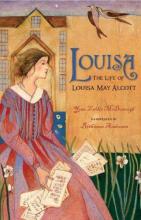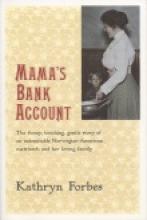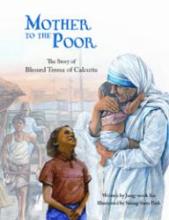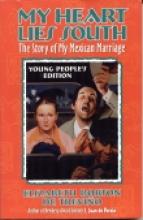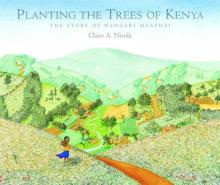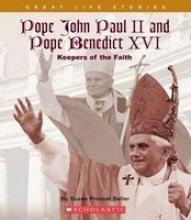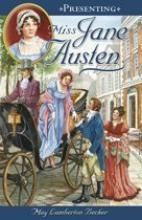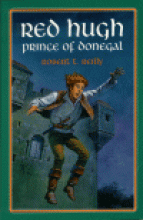Biographies
Louisa
I love picture books and I love biographies... and I love it when both are combined successfully! This warmly illustrated picture book tells of the most beloved American author Louisa May Alcott. Her family was definitely sui generis, holding unusual beliefs and moving often, and Louisa began thinking and writing poetry at a very young age.
This picture book sheds light on what a noble soul Louisa had, filled of generosity, integrity and character. Highly recommended especially for young readers who love the wonderful Little Women author.
Mama's Bank Account
When I first proposed to read this story aloud to my children, my oldest, then perhaps 8 or 9 years old, protested loudly! She thought it was going to be a series of numbers and notes about expenditures that I was going to read to her. It only took a little persuading and a few pages before she was hooked. This is a true story - really a set of simple reminiscences - about a Norwegian immigrant family living in San Francisco in the early 1900s (somewhere between the 1906 earthquake and World War I). The stories center around the author's mother, "Mama" - a wonderful character who is difficult to describe with just a few quick adjectives. This is partly because the author reveals her mother's character through favorite family stories in a lovely, subtle way (with plenty of laugh-out-loud spots!). You come to see that Mama is shrewd but completely selfless; she has a wonderful grasp of human nature, but is easily misunderstood (by friends, relatives or readers of the book) because she so readily sees what is good in everyone; she is quiet, but oh, SO stubborn and certainly knows how to get things done in spite of insurmountable odds! Looking through Mama's eyes at the interesting characters that come into her life is a wonderful experience and one you shouldn't miss. Here's a little part of a story to give you a little sense of the book. A boarder, Mr. Hyde, has lived with their family for some time and enthralled all of them by reading classic novels aloud to them every night.
Even when the warm weather came we children didn't beg to go out in the evenings to play one-foot-off-the-gutter. I think Mama was glad; she never liked us running the streets. Best of all, Nels went less and less to the street corner to hang around with the neighborhood boys. The night they got into trouble for breaking into Mr. Dillon's store Nels was home with us. He'd wanted to hear the last chapter of Dombey and Son. Mr. Hyde had taken us deep into Ivanhoe when he got the letter. "I must go," he told Mama. "I shall leave the books for Nels and the children. Here is my check for all I owe you, madam, and my profound thanks for your hospitality." We were sorry to see Mr. Hyde leave, but it was with great excitement that we brought his books out into the kitchen. There were so many of them! We read some of the titles: A Tale of Two Cities, Nicholas Nickleby, Vanity Fair, The Adventures of Alice in Wonderland, Oliver Twist, A Midsummer Night's Dream. Mama dusted them reverently. "So much we can learn," she said. Nels, she added, could read aloud to us each evening, just as Mr. Hyde had done, because Nels too had a fine voice. I could see that made him very proud. Mama showed Mr. Hyde's check to Aunt Jenny. "You see?" she said. "The warm coat I shall have after all." It was too bad that Aunt Jenny was still there when Mr. Kruper came. Mr. Kruper owned the restaurant and bakery down the street and he was angry. "That man Hyde was a crook!" he shouted. "Look at this check he gave me. It's no good! The bank people tell me he cashed them all over the neighborhood." Aunt Jenny's triumphant nod said as plainly as words - I told you so! "I'll bet he owes you folks plenty, too, eh?" Mr. Kruper asked. Mama looked around at all of us. Her eyes rested longest on Nels. "Read," she told him gently, "read to us from Ivanhoe." Then she walked to the stove and put the check into the flames. "No," she answered Mr. Kruper. "No. He owes us nothing."
I think this is best as a solo read for the 12 and up crowd, though it could be read aloud - perhaps with a little explanation or discussion along the way - to children much younger. If you've ever seen the movie I Remember Mama (1948) with Irene Dunne, you're already acquainted with the main characters of this lovely little book. If you haven't seen it yet, you're missing out on a real treasure that could be enjoyed before or after this book. But that's a matter for a separate review.
Copyrights 1943/1971
Mother to the Poor
My Heart Lies South
This story is delightful for its own sake, but also gives tidbits of history (Mexican and Spanish), religion, and culture. It is also the sort of book that is useful and delightful for teenage girls to read as they begin to consider their future roles as mothers, wives and influences on their community. (The humorous incidents will probably keep it interesting enough for the guys as well.) There are some references to dating and courtship, the consequences of drinking too much and other subjects which would not be suitable for young children (although they are handled in a reasonable manner). Don't be turned off by the word "seduction" that shows up in the first few pages. It comes up in a fairly harmless context and is not an indication of shocking material to come.
I also found her discussions of parenting interesting because she was raising her children at a time when American doctors advocated bottle feeding and a sort of detached parenting . When she wrote the story, however, the doctors had begun to come around to a healthier and more natural parenting philosophy and the author expresses some of her regrets and frustrations at following the conventional wisdom which really went against her instincts.
Her arguments in favor of the Mexican view of the role of women is quite compelling. The Mexican role is, in many ways, very Catholic. Women are not inferior or subservient (as in the "Leave it to Beaver" American model of the 1950s) nor do they feel the need to fight for "equality" as in the American feminist model of today. The Mexican women have (or perhaps had) a very strong and dominant role within the family which was the center of society. They liked to make their husbands feel manly by allowing them to help them because it made them better husbands and companions. Although the author does not fully embrace every particular of the Mexican customs in this regard, she sees them generally as the women's way of cunningly "allowing" the men to feel superior in order to keep them happy while almost always having the final word.
Planting the Trees of Kenya
When I was doing my research for this year's library tree project, I spent a bunch of time at a local bookstore, checking out great new children's titles. Easily my favorite (which it turns out the library had already purchased) was Planting the Trees of Kenya: The Story of Wangari Maathai by Claire A. Nivola.
It's a lovely true story about a lady from Kenya who won the Nobel Peace prize for helping her country recover its economic security by starting a movement to replant the trees and small farms and gardens that had helped the country prosper in the past, but that had been cut down to make way for larger commercial farming (which had devastated the economy).
The thing that had struck me about the book on this first read-through was the beautiful sense of order and dignity - the importance of stewardship of nature, the use of the people themselves as important resources in solving problems, the simplicity of remembering that one person can really make a substantial change, the need for perseverance even when things aren't easy right away. Basically: we change ourselves to change the world. It also has lovely small-is-beautiful and principle-of-subsidiarity sort of themes in it.
The thing I had forgotten was a detail about the years that Wangari had spent in America - where she went to college and majored in biology. I had completely forgotten that she went to a Catholic college (even though the campus picture is portrayed with nuns in habits walking around!). There is a lovely indication in the story that their philosophical influence had a significant impact on her story (and is of course an essential part of the story that her background in biology helped prepare her for her good work):
Her heart was filled with the beauty of her native Kenya when she left to attend a college run by Benedictine nuns in America, far, far from her home. There she studied biology, the science of living things. It was an inspiring time for Wangari. The students in America in those years dreamed of making the world better. The nuns, too, taught Wangari to think not just of herself but of the world beyond herself.
How eagerly she returned to Kenya! How full of hope and of all that she had learned!
The story (and the book) is SO right and so beautiful in so many ways. It's a book anyone could love.
The unexpected discovery I made when I read the "Author's Note" in the back of the book was that the college Wangari attended in the United States was Benedictine College in Atchinson, Kansas!

